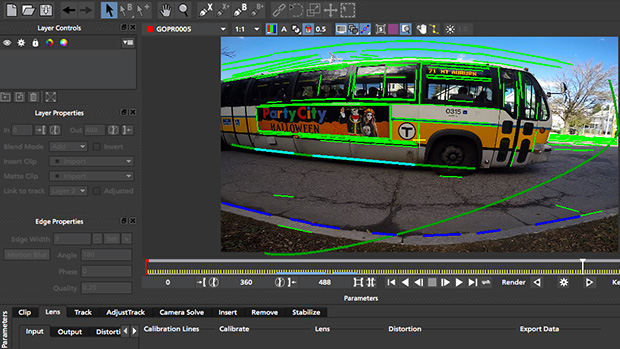

Remember to turn layer cogs (AKA: gears) off when you are done tracking, as those cogs tell you which layers are being used for tracking! You can often get a great result with default settings, but if you’re getting a lot of drift, try increasing the Min % Pixels Used. You can use backwards and forward tracking from wherever it is that you have drawn your spline. Scrub through the timeline and find the largest, sharpest, and most parallel to the camera area to begin tracking from draw your shape there to start with. You can be fairly loose with your spline because the Planar Tracker is intelligent enough to discard the pixel movement that does not move similarly enough.Select your preferred spline tool, either X Splines or Beziers.ĭraw spline around the planar area that you want to track. Working with very long files can be time consuming for the artist and can slow down tracking as it searches for more frames. Try to only use what you need, use individual shots rather than an entire edit.
Nuke 10 link tracker data pro#
It’s time to get Mocha added to your toolbox!įree Motion Tracking Clips for Training (Non-Commercial) from the Mocha Pro channel on Vimeo. We are confident that you will speed up your workflow.
Nuke 10 link tracker data software#
NOTE: Take some time to learn the software by reading this section, watching our videos, and checking out the documentation. If you try to use Mocha like older tracking technology, you will not get successful tracks. This is a different method from standard 1-point, feature, or multi-point tracking tools. Since There Are No Point Trackers in Mocha, splines are used for both tracking and rotoscoping. Think of your objects as if they are low poly models and track the planes most relevant to the data you need. For instance if you were tracking a tabletop with a vase on top of it, you would want to draw the spline to avoid the flower arrangement in the center of the table – the vase is not on the same plane as the table and will make your track less accurate. Sometimes it will be obvious – other times you may have to break your object into different planes of movement. The key to getting the most out of the Planar Tracker is to learn to find planes of movement in your shot which coincide with the object that you want to track or roto.

Mocha’s Planar Tracker technology provides 2D tracking data by tracking planes rather than points. Getting Started: Mocha Pro The Mocha Pro Quick Start Guide!


 0 kommentar(er)
0 kommentar(er)
